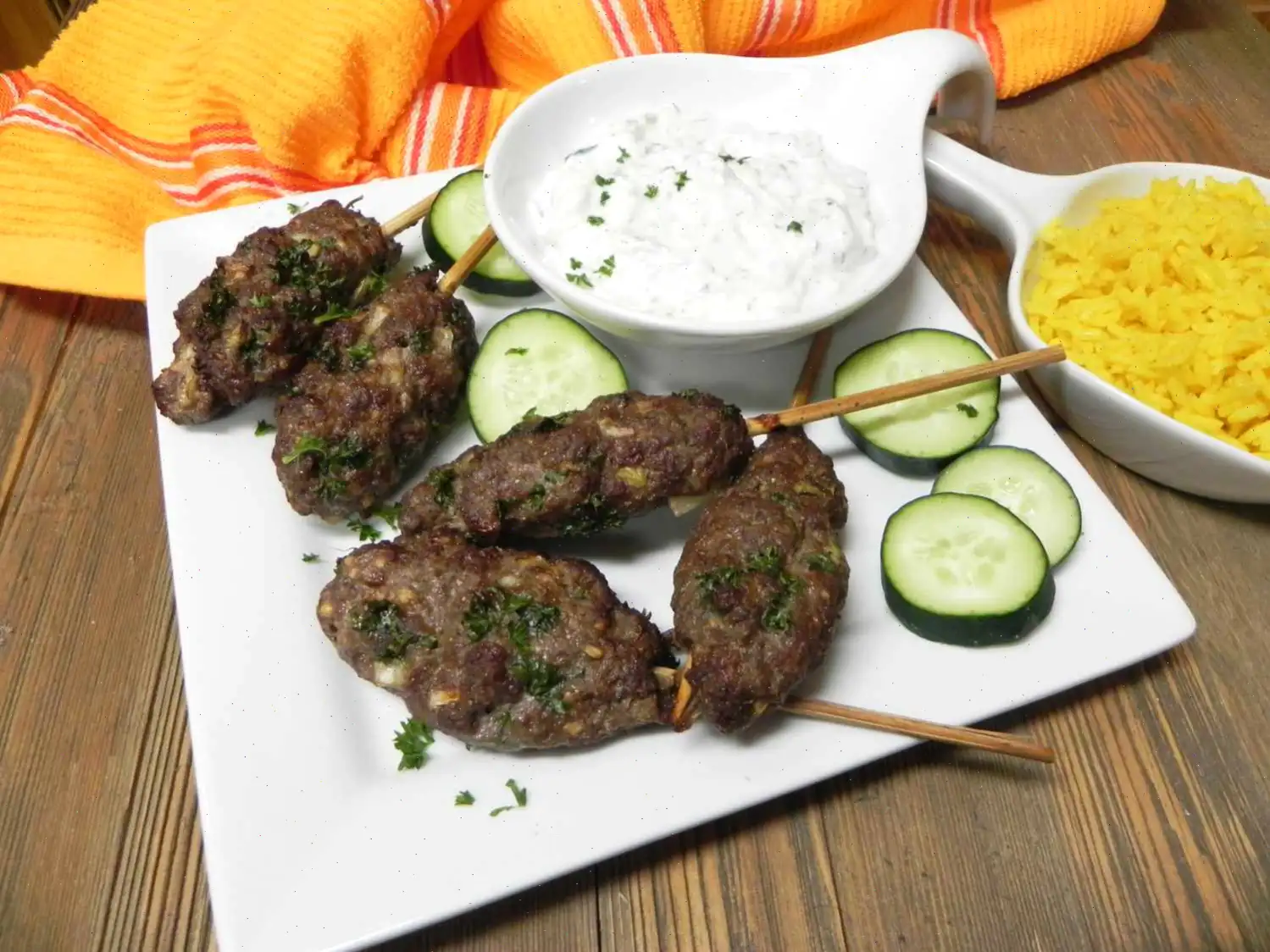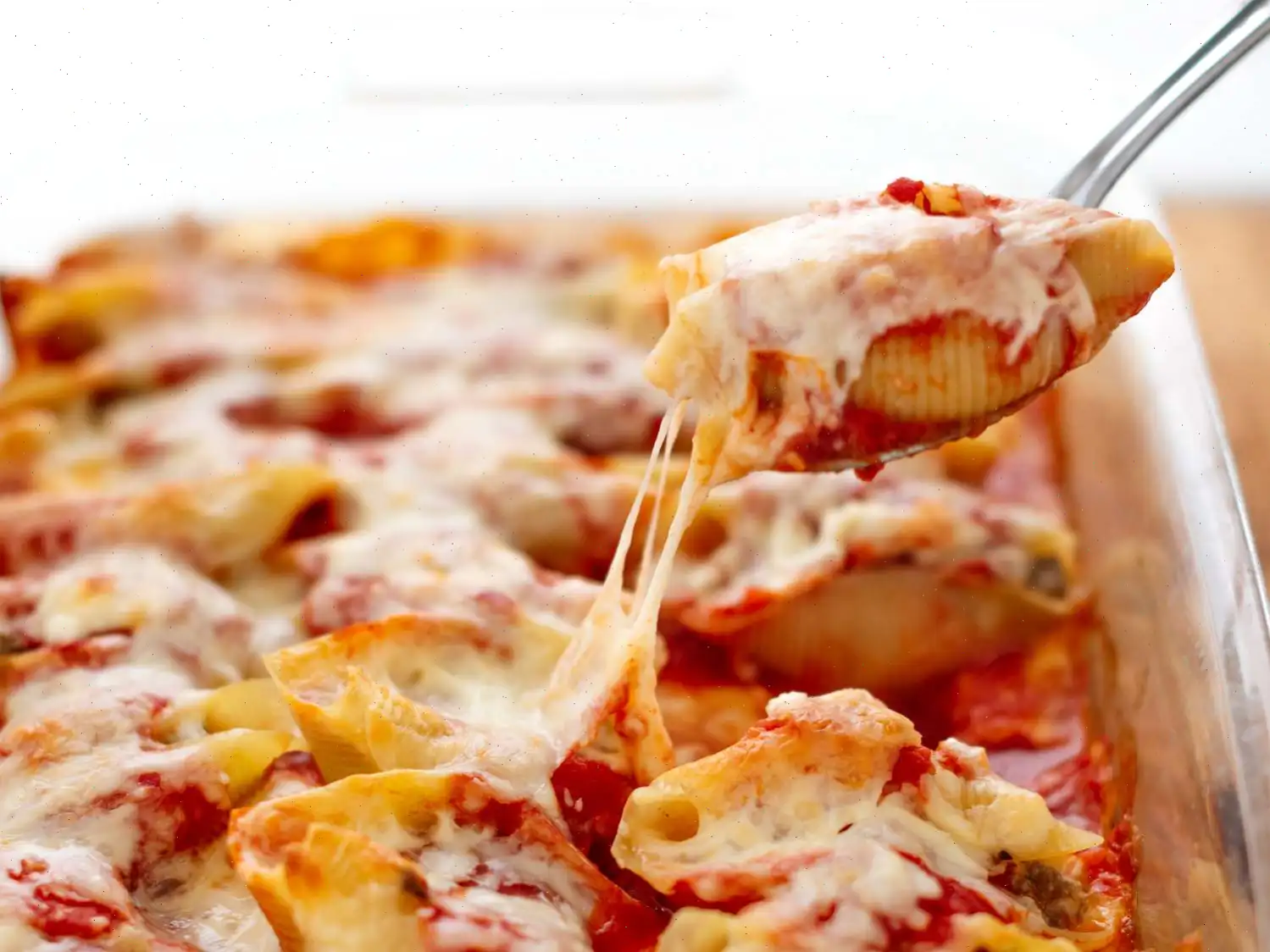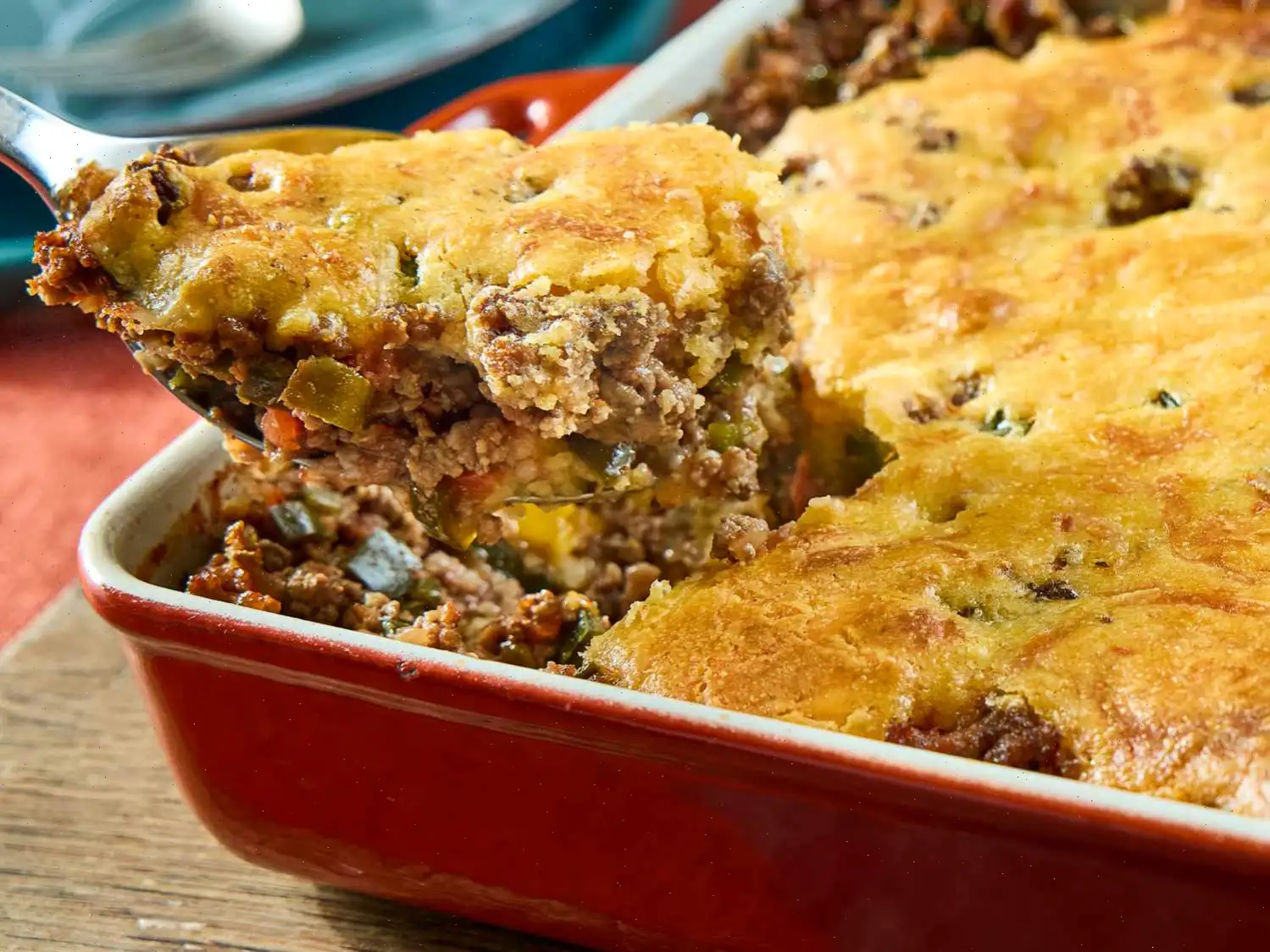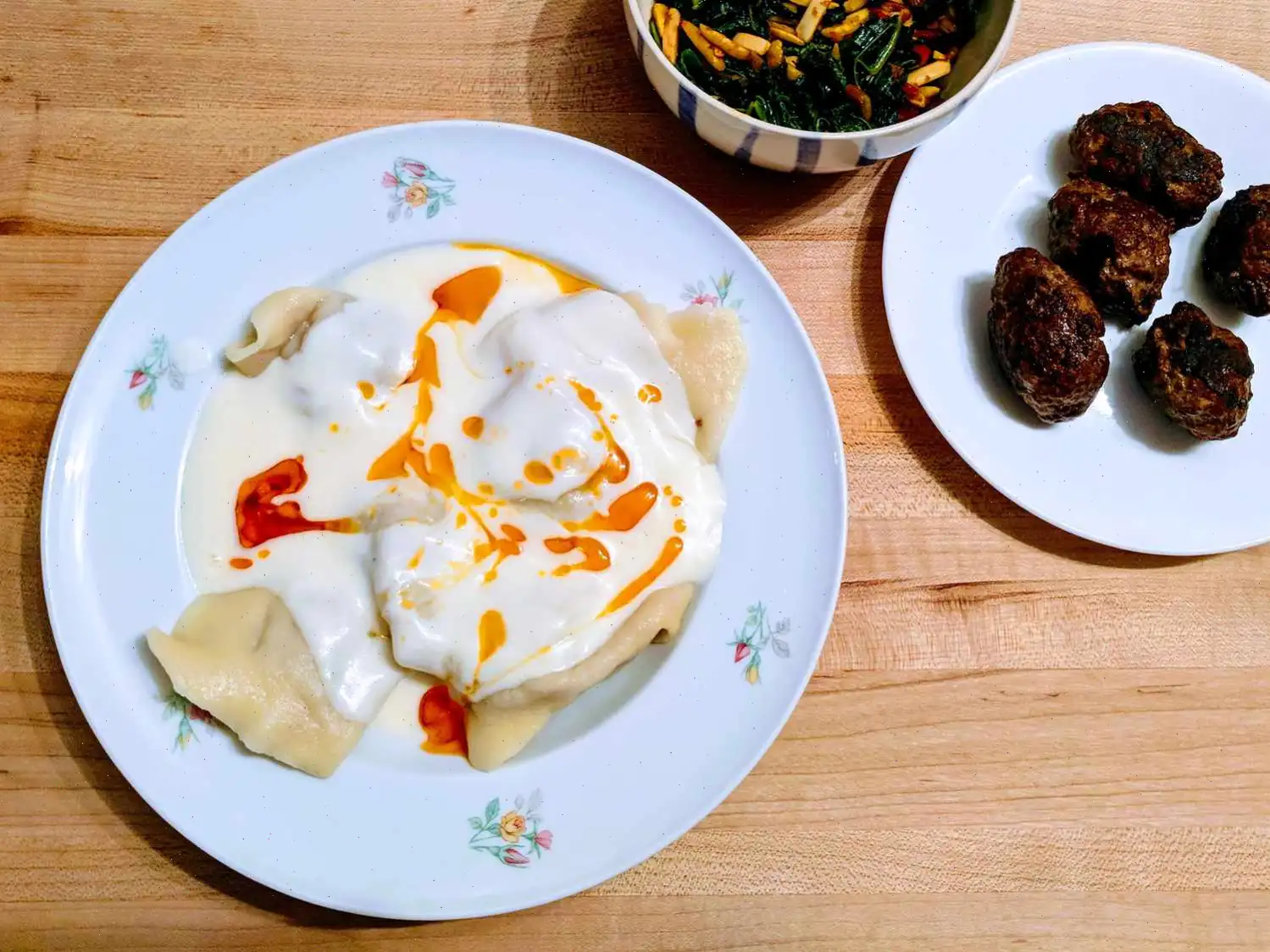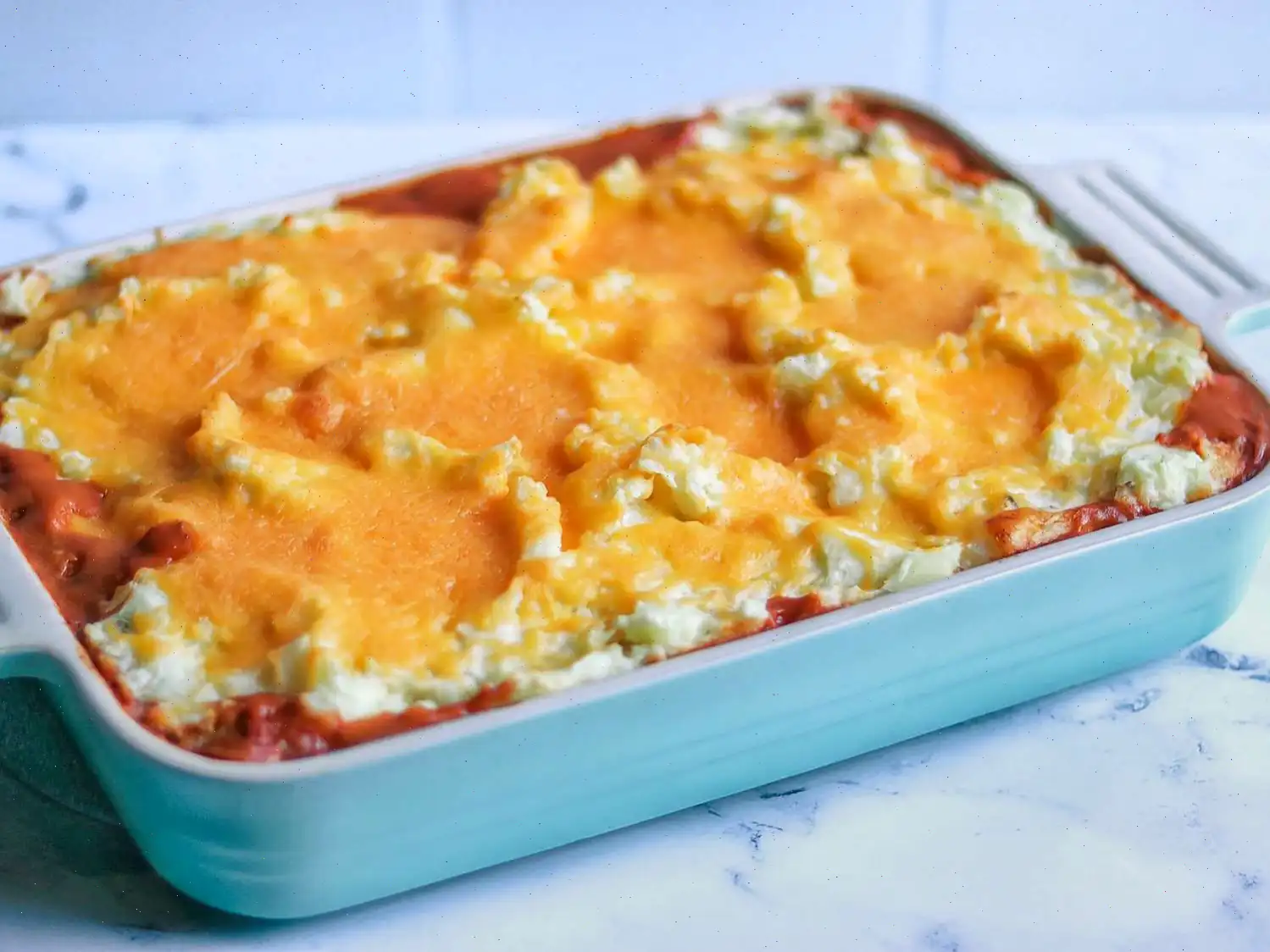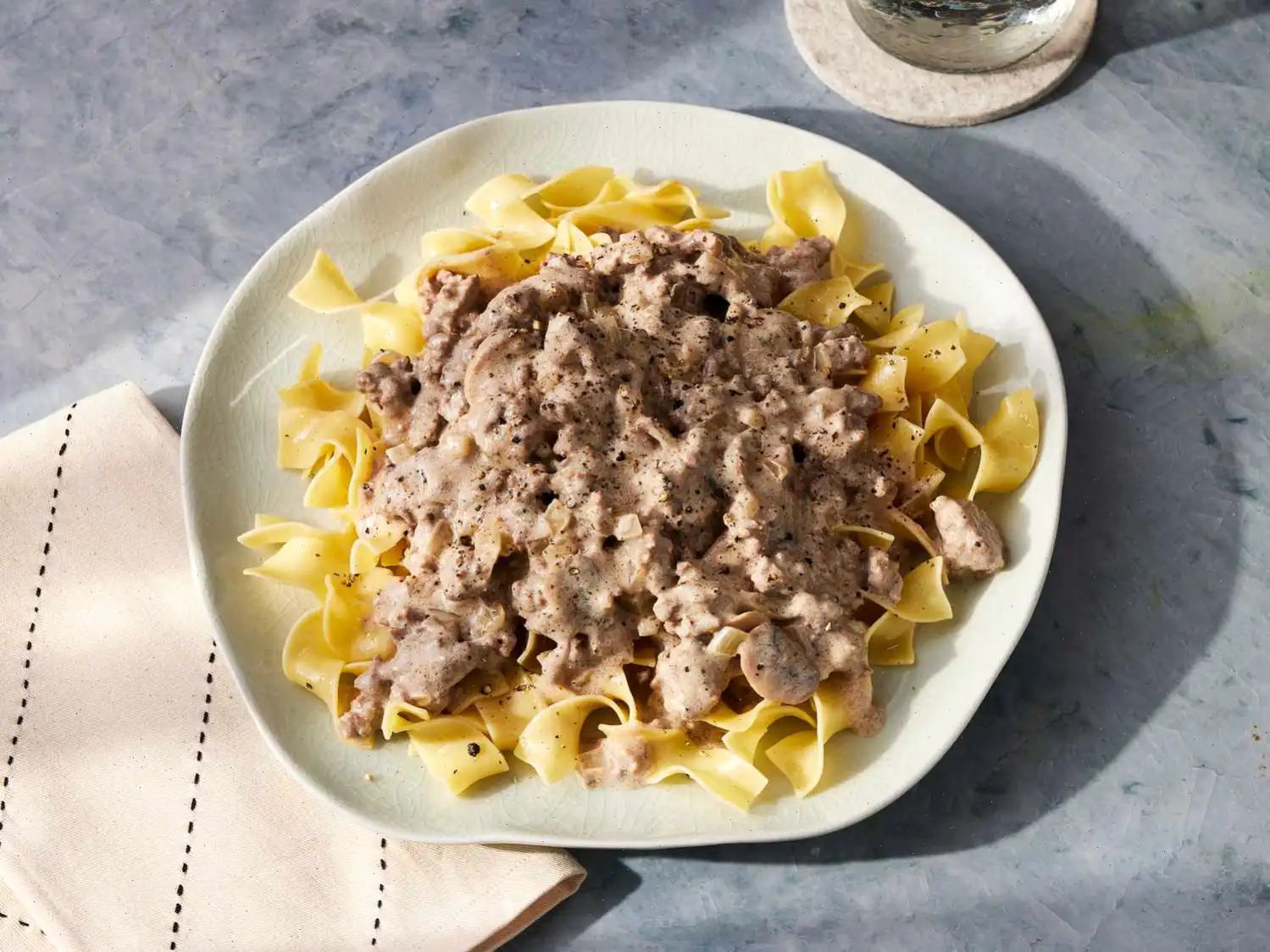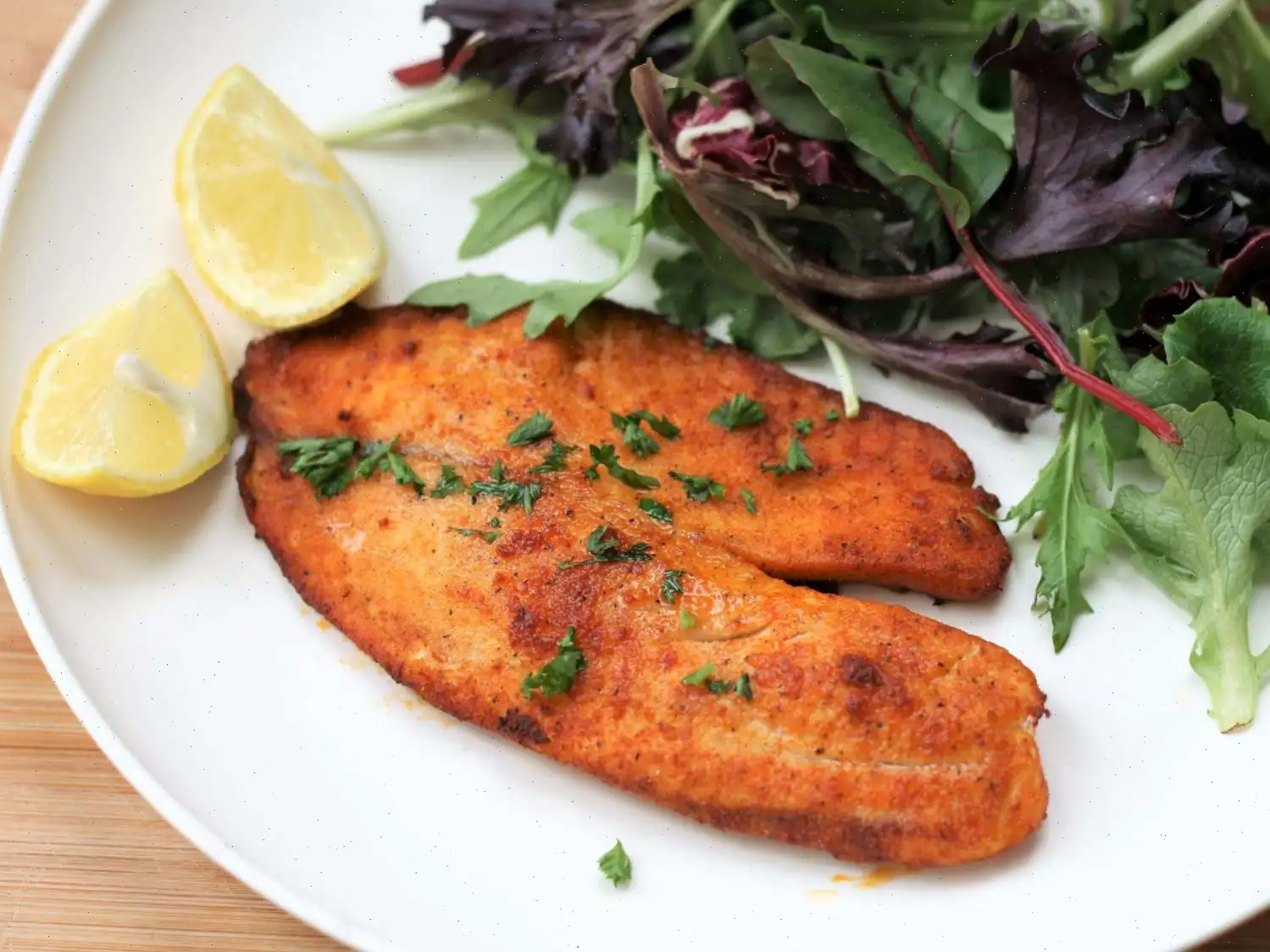
Air Fryer Beef Kofta Kabobs with Tzatziki Recipe
This recipe creates juicy and flavorful Beef Kofta Kabobs served with a refreshing tzatziki sauce. Perfect for a summer meal or a cozy dinner at home.
Ingredients
- 1 pound ground beef
- 1/4 cup minced yellow onion
- 1/4 cup chopped fresh parsley
- 2 cloves garlic, minced
- 1 teaspoon ground cumin
- 1 teaspoon ground coriander
- 1 teaspoon salt
- 1/4 teaspoon freshly ground black pepper
- 1/4 teaspoon ground cinnamon
- 8 (6-inch) skewers
Tzatziki Sauce
- 1 cup plain Greek yogurt
- 1/2 cup grated cucumber, squeezed dry with paper towels
- 1 clove garlic, minced
- 1 teaspoon lemon juice
- 1/4 teaspoon dried dill
- 1/4 teaspoon kosher salt
Directions
- In a large bowl, combine the ground beef, minced onion, chopped parsley, garlic, cumin, coriander, salt, black pepper, and cinnamon. Mix well until all ingredients are evenly incorporated.
- Divide the mixture into 8 equal portions. Shape each portion into an oval-shaped patty around a skewer, ensuring that the skewer point is fully covered.
- Place the prepared kabobs on a plate and refrigerate for about 30 minutes to help them firm up.
- While the kabobs are chilling, prepare the tzatziki sauce. In a small bowl, combine the Greek yogurt, grated cucumber, minced garlic, lemon juice, dried dill, and kosher salt. Stir until smooth and refrigerate until ready to serve.
- Preheat your air fryer to 370F (188C). Once hot, place 4 kabobs in the air fryer basket, making sure they dont touch each other.
- Cook the kabobs for 10 minutes, or until they are cooked through and slightly golden on the outside. Once done, transfer the kabobs to a plate.
- Repeat the process with the remaining kabobs.
- Serve the hot kabobs with the chilled tzatziki sauce on the side. Enjoy!
Nutrition Facts (per serving)
- Calories: 181
- Total Fat: 10g (13% DV)
- Saturated Fat: 4g (19% DV)
- Cholesterol: 52mg (17% DV)
- Sodium: 370mg (16% DV)
- Total Carbohydrates: 3g (1% DV)
- Dietary Fiber: 1g (2% DV)
- Total Sugars: 1g
- Protein: 19g (37% DV)
- Vitamin C: 3mg (4% DV)
- Calcium: 65mg (5% DV)
- Iron: 2mg (12% DV)
- Potassium: 309mg (7% DV)
Note: Percent Daily Values (DV) are based on a 2,000-calorie diet. Your daily values may vary depending on your calorie needs.
History and Origins of Beef Kofta Kabobs
Beef kofta kabobs have a rich culinary history that stretches back centuries to the Middle East, where minced meat dishes were both practical and flavorful. Originally, kofta referred to a mixture of ground meat, spices, and herbs shaped into balls or elongated patties, often cooked on skewers over open flames. This technique allowed cooks to prepare protein efficiently while enhancing the flavor with aromatic spices. Over time, kofta spread across the Mediterranean, Central Asia, and South Asia, adapting to local tastes and ingredients.
Regional Variations
Different regions have put their own twist on beef kofta kabobs. In the Levant, they are typically seasoned with cumin, coriander, parsley, and garlic, often served with yogurt-based sauces like tzatziki or tahini. Turkish kofta often includes onion and sumac for a tangy flavor, while in Iran, kabobs may be mixed with saffron and onion juice. In South Asia, kofta can appear in rich, spiced curries rather than as skewers, highlighting the versatility of this dish across cultures.
Differences from Similar Dishes
While kofta kabobs resemble other minced meat dishes such as meatballs or hamburgers, several key differences stand out. Kabobs are elongated and cooked on skewers, which allows for even cooking and a smoky flavor when grilled or air-fried. Unlike standard meatballs, kofta typically incorporates a blend of aromatic spices like cumin, coriander, and cinnamon, giving it a distinctive Middle Eastern taste. The pairing with tzatziki sauce also distinguishes it from other meat-based skewers around the world.
Common Serving Occasions
Beef kofta kabobs are often served at family dinners, festive gatherings, and street food markets throughout the Middle East. They are commonly accompanied by flatbreads, rice, or salads, with tzatziki or yogurt-based sauces on the side. In modern kitchens, air fryers have made it easier to enjoy this dish at home, retaining the traditional flavor and texture while minimizing cooking time.
Interesting Facts
- Kofta is considered one of the earliest forms of street food in Middle Eastern history, designed for portability and quick consumption.
- The word "kofta" comes from the Persian word kufteh, meaning "to pound" or "to grind," reflecting the preparation of minced meat.
- While traditionally grilled over charcoal, modern recipes like this one use air fryers to replicate the smoky flavor with less oil and mess.
- The combination of warm spices and cool tzatziki is a classic example of balancing flavors in Middle Eastern cuisine.
- Kofta kabobs have inspired variations worldwide, including Greek soutzoukakia and South Asian curry kofta, showing the dishs global influence.
You can listen to this recipe in AI audio format. Simply click the play button below to listen to the content in a format that suits you best. It’s a great way to absorb information on the go!


